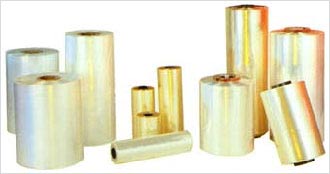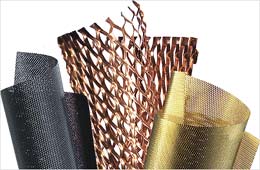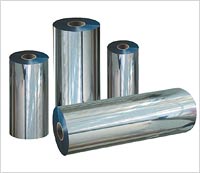Flexible Packaging Material
Flexible packaging is one of the most popular method of packaging. Flexible packaging is the second largest packaging segment in the U.S., worth a $26.4 billion. The largest market for flexible packaging is food , followed by retail non-food, industrial applications, consumer products, and medical and pharmaceuticals. We give below the details of the varied flexible packaging materials used in the packaging industry.
Polyolefin Films Packaging
Until late 1970s, most of the packaging
applications were dominated by metal and glass packaging when plastic resin
companies came up with advanced resins and resin formulations to replace
these materials on the basis of lower cost. Polyolefin films targeted
cellophane applications for packaging foods on the basis of property per
cost improvements. Polyolefin films provided better physical properties, and
low moisture resistance(MVTR) compared to cellophane at a lower cost. As a
result polyolefin films grew stronger improving other properties to meet
market demands and cellophane film continued to lose markets.
These developments began with major plastic resin companies R & D
programs especially polypropylene films. As polypropylene came with better
tensile strength and modulus values, it soon became the dominant material
for snack packaging. BOPP or Bi-axially oriented polypropylene became the
largest film packaging material in use mainly due to cost as polyethylene
film production technology was unable to produce less than 1mil structures.
This advantage enabled BOPP to become the dominant film as a "substrate"
film providing stiffness for bag applications providing stand-up properties.
This encouraged programs to improve oxygen transmission resistance using
polyvinyldichloride (PVDC) and ethylene vinyl alcohol (EVAL) materials
incorporating these oxygen barrier compounds to make film structures.
 Send online enquiry for Flexible Packaging Materials, Polyolefin Films Packaging, Coated Films Packaging, Film/ Foil Laminations, Resin and Resin Converters. Get the best response from genuine flexible packaging manufacturers and suppliers. Click here to send your enquiry
Send online enquiry for Flexible Packaging Materials, Polyolefin Films Packaging, Coated Films Packaging, Film/ Foil Laminations, Resin and Resin Converters. Get the best response from genuine flexible packaging manufacturers and suppliers. Click here to send your enquiry.
Coated Films Packaging
The first coating application was to
heat seal film in making bags for snack foods by film "converters".
After this comes the film laminations using solvent adhesives as the most
expeditious method. This technology is still being used today where taste
and odor transfer are acceptable. Film co-extrusion technology was developed
to overcome this problem and is the most popular method for volume
multi-layer film constructions, such as polyethylene, polypropylene,
polyester and other films where specific properties are required. The use of
co-extrusion techniques can improve gas barrier resistance, physical and
chemical properties and mechanical reasons for high rate production
equipment.
Film/ Foil Laminations
Film/aluminum foil laminations were being developed for the military Meals
Ready To Eat(MRE) program replacing "C" canned rations. The need
for a 5 year shelf life dictated by Department Of Defense (DOD) required the
use of aluminum foil at the time. Aluminum foil pin holes had to be kept to
a minimum to meet 5 year shelf life requirement. MRE entrees had same
texture problem that existed with retorting, but it was still better and
more convenient than the can it was designed to replace.

Metallized films were developed to replace aluminum foil to eliminate foil
cracking and and improve heat seal integrity. The pouch would "crack"
under low temperature use conditions and heat sealing technology had to be
developed for the MRE to be acceptable for long term storage. With
improvements made in PP film, foils have replaced with metallized films that
provide low oxygen transmission rates and low moisture vapor transmission
rates.
Resin and Resin Converters
To make polyethylene resin, ethylene gas is polymerized, which is then
extruded into films (PE). Today, it is the most dominant packaging material
used in making food bags due to its unique properties and low cost.
Although, it lacks stiffness but is quite suitable for many packaging
applications. Propylene gas is polymerized almost in the same way as is
ethylene gas for producing polyethylene resin to make polypropylene (PP)
resin and film.
As much higher polymerization temperatures is used, PP becomes more
rigid resulting in higher modulus and tensile strength properties and
higher use temperature capability. Both the PE and PP films had their own
markets, but "marrying" these films created a larger market for
film converters. PP film became the most popular film for its clarity,
good stiffness at room and increased temperatures for laminated and
co-extruded applications.
Polyester Films Packaging

Polyester(PET)
film resin is the latest entrant in flexible packaging. This film has good
gas barrier properties and is being extrusion laminated to films that have
good moisture barrier properties such as PE or PP. Initially, PET was
substituted to replace the use of EVOH or PVDC formulated for gas barrier
properties. PET film is more expensive has good gas barrier property and
offers benefits as good optical clarity, heat resistance, recyclable and
environmentally friendly. Olefin films require chemical stabilizers to
prevent polymer degradation during film manufacture and oxidative
degradation under use conditions that poses environmental concerns, long
term.




 Polyester(PET)
film resin is the latest entrant in flexible packaging. This film has good
gas barrier properties and is being extrusion laminated to films that have
good moisture barrier properties such as PE or PP. Initially, PET was
substituted to replace the use of EVOH or PVDC formulated for gas barrier
properties. PET film is more expensive has good gas barrier property and
offers benefits as good optical clarity, heat resistance, recyclable and
environmentally friendly. Olefin films require chemical stabilizers to
prevent polymer degradation during film manufacture and oxidative
degradation under use conditions that poses environmental concerns, long
term.
Polyester(PET)
film resin is the latest entrant in flexible packaging. This film has good
gas barrier properties and is being extrusion laminated to films that have
good moisture barrier properties such as PE or PP. Initially, PET was
substituted to replace the use of EVOH or PVDC formulated for gas barrier
properties. PET film is more expensive has good gas barrier property and
offers benefits as good optical clarity, heat resistance, recyclable and
environmentally friendly. Olefin films require chemical stabilizers to
prevent polymer degradation during film manufacture and oxidative
degradation under use conditions that poses environmental concerns, long
term.